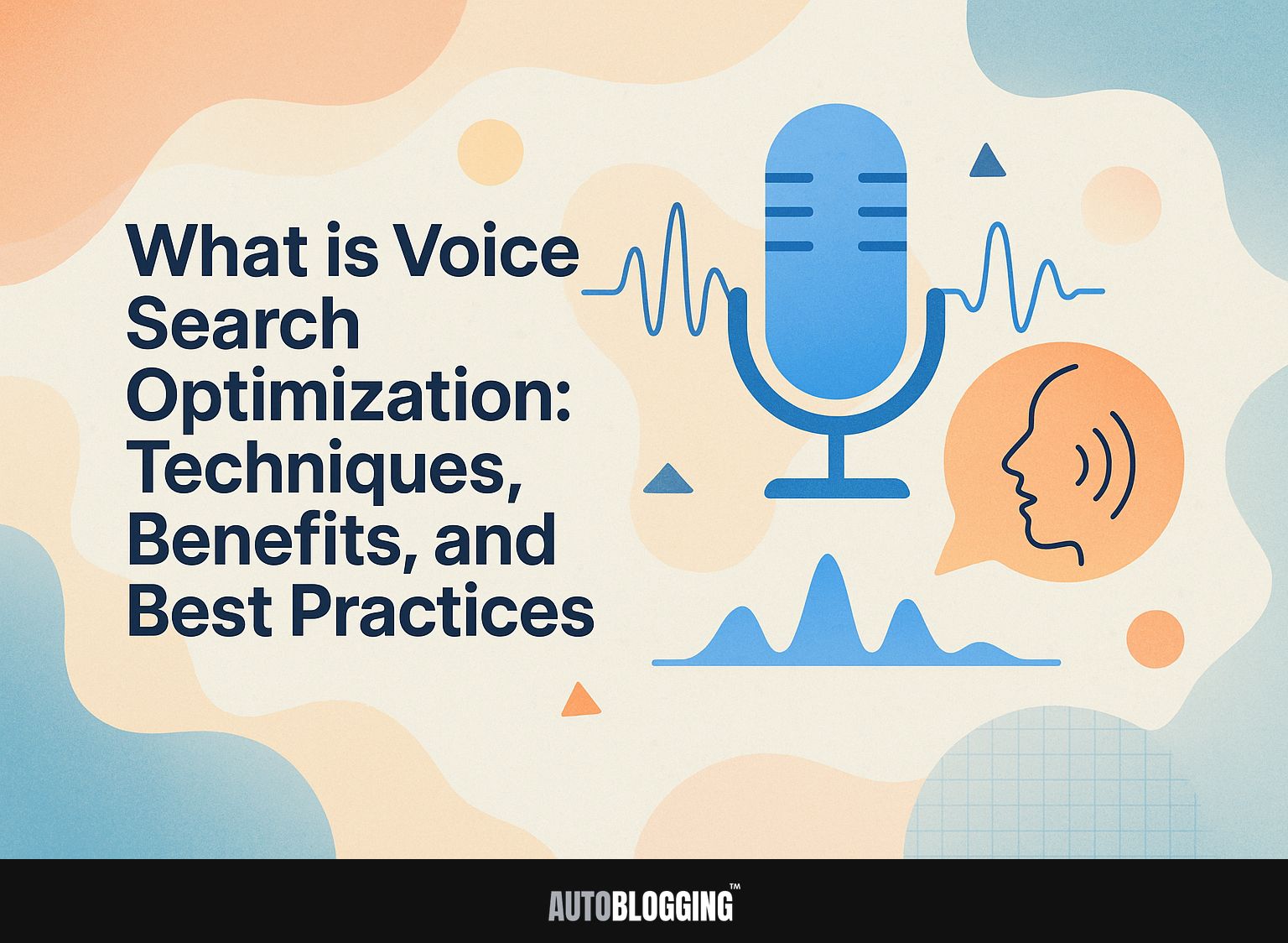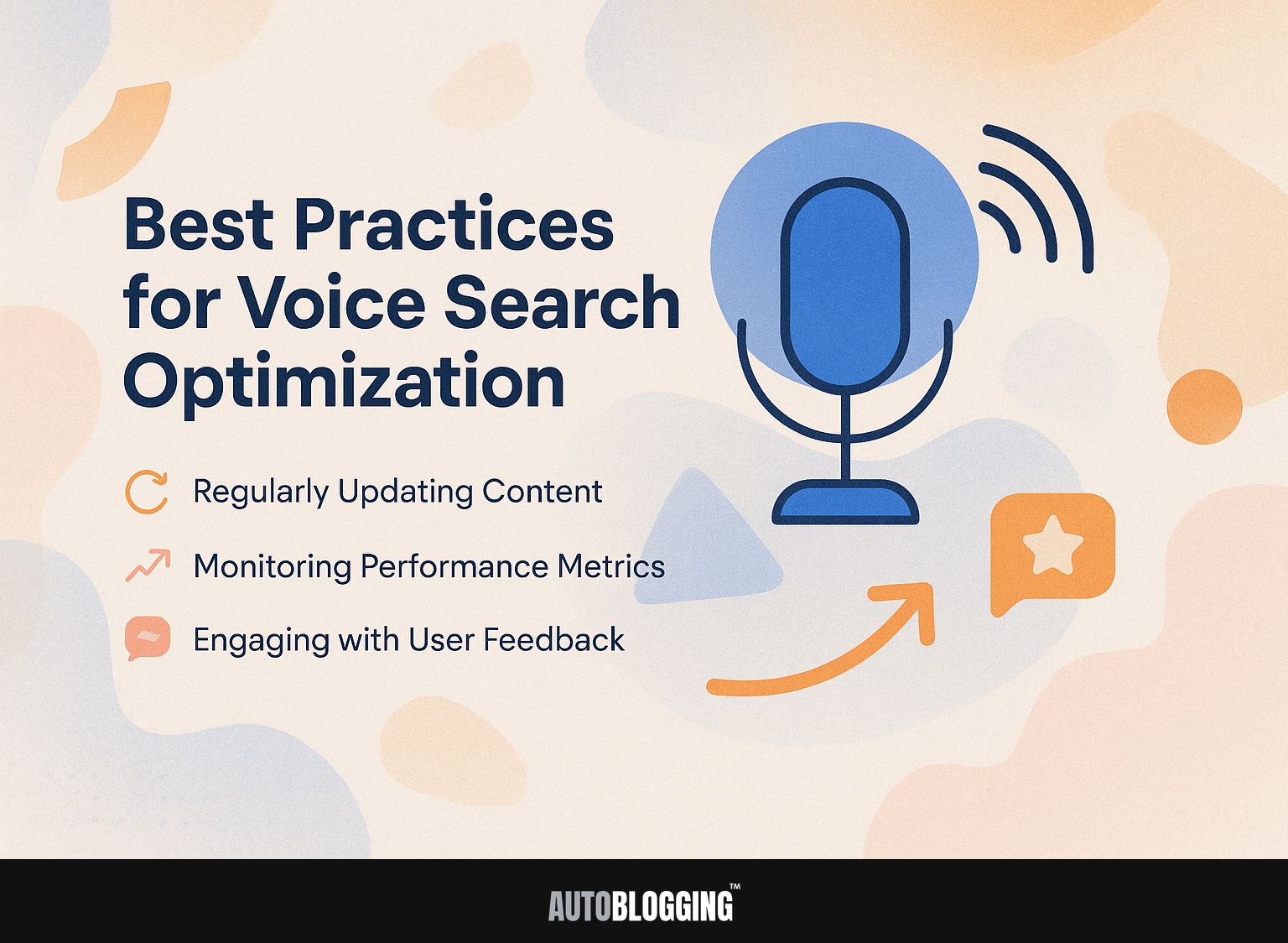
Voice search is very important now because many people use voice assistants like Google Assistant and Siri during their online activities. This guide explores useful methods and practices to improve voice search SEO, helping you make the most of the increasing use of voice-based digital searches. Find out the advantages of improving your content for voice search, and learn how to remain competitive in the online market.
Key Takeaways:
- To make voice search better, adjust content to work effectively with devices such as smart speakers and virtual assistants.
- Using specific keywords, organizing data clearly, and making websites load faster are important methods for improving voice search.
- Voice search optimization provides benefits like higher visibility and traffic, better user experience, and staying ahead of competitors in the changing online environment.
Contents
- How Voice Search Works
- Techniques for Voice Search Optimization
- Benefits of Voice Search Optimization
- Best Practices for Voice Search Optimization
- Challenges in Voice Search Optimization
- Future of Voice Search Optimization
- Frequently Asked Questions
- 1. What is Voice Search Optimization and why is it important for businesses?
- 2. What are the techniques used in Voice Search Optimization?
- 3. What are the benefits of implementing Voice Search Optimization for a website?
- 4. What are the best practices for Voice Search Optimization?
- 5. Is Voice Search Optimization only important for businesses in specific industries?
- 6. How can I start implementing Voice Search Optimization for my website?
1. Definition of Voice Search Optimization
Improving voice search means adjusting your online content so it appears in search results when people use voice features on devices such as Google Assistant, Siri, and Alexa.
To get better outcomes with voice search, focus on using common language and detailed, longer keywords.
For example, instead of focusing on the keyword “best pizza,” try using “What is the best pizza place near me?” Use structured data to make it easier for search engines to interpret your content.
You can use tools like Google’s Structured Data Markup Helper to do this. Another key strategy is improving page load speed, as voice search users expect quick answers.
Aim for a loading time under three seconds to increase your chances of being selected in voice results.
2. Importance in the Digital Landscape
As 27% of people worldwide who use the internet now rely on voice search, it’s important to adjust strategies for this method to increase recognition of your brand and connect with users more effectively.
As more people use voice search, updating your online marketing plan is important. Focus on long-tail keywords that mirror natural speech patterns, as they often yield better voice search results.
For example, instead of focusing on “best coffee shop,” try “what is the best coffee shop near me?” Make sure your website works well on phones and opens fast, since most people use voice search on mobile devices.
Using tools like Google’s Keyword Planner can help find these common phrases, so you can adjust your content properly.
How Voice Search Works
Voice search works by using modern voice recognition and natural language processing to understand spoken words and provide matching search results. This technology is part of a broader shift in search dynamics, balancing traditional SEO practices with AI advancements, as highlighted in our recent survey on AI’s impact on search stages.
1. Basics of Voice Recognition Technology
Voice recognition technology converts spoken words into text, enabling easy use of digital voice assistants like Alexa and Google Assistant. This technology usually includes different parts: sound models, language models, and methods for decoding.
Acoustic models interpret audio signals, differentiating phonetic sounds, while language models predict word sequences for added accuracy.
For instance, Google’s speech-to-text feature excels in recognizing diverse accents, thanks to its extensive training on multilingual datasets.
Users can improve performance by using particular voice training features in certain apps. These features allow the system to get better at recognizing each person’s way of speaking, leading to improved accuracy.
2. The Role of Natural Language Processing (NLP)
Natural language processing analyzes spoken questions to provide accurate search results that meet users’ requirements.
Technologies like Google’s BERT (Bidirectional Encoder Representations from Transformers) have improved how search engines interpret user questions by focusing on the whole meaning rather than just individual keywords.
When you search for ‘best pizza places near me,’ the results are influenced by factors like ‘best,’ ‘pizza,’ your location, and how you typically use the site.
To improve this, content creators should use different sentence patterns and consider what users are looking for in their writing, focusing on full answers that cover possible additional questions, which helps increase visibility in search results. For an extensive analysis of this trend, our comprehensive study examines the latest insights from industry experts.
Techniques for Voice Search Optimization
To improve results for voice search, businesses need to use certain methods that address how people speak their questions. Implement this by following the methodology in our off-page SEO strategies, which can enhance your understanding of optimizing for voice queries.
1. Keyword Research for Voice Search
Doing keyword research for voice search means concentrating on longer keywords and phrases that sound like how people naturally talk.
To find these keywords effectively, use tools such as SEMrush or Ahrefs. Start by entering a broad topic related to your niche and filter results for questions.
For example, if you work in travel, look for ‘family travel tips’ to find questions such as ‘What are the top places for families?’ Check out competitors’ sites to find out which keywords bring them visitors.
Use Google Trends to find search terms that are becoming more popular over time, keeping your content up-to-date and matching what people are currently interested in.
2. Creating Conversational Content
Making content that sounds like regular conversation is important for voice search because it matches how people talk to their devices.
To do this, use brief sentences that sound like daily conversation. For example, instead of saying, “This product offers extensive features and benefits,” try, “What does this product do? It helps you save time and energy!”
Use direct questions to connect with your audience, like asking, “Have you thought about ways to make your work process better?”
Integrate practical examples relevant to your topic, like, “If you’re writing about cooking, describe a quick recipe anyone can try.” This approach invites readers into a more relatable conversation.
3. Optimizing for Local Search
It’s important for businesses to improve local search results because nearly 76% of people using voice commands request area-specific information.
To improve your visibility in the area, begin by creating a Google My Business page. Make sure your business’s name, address, and phone number are the same on all platforms, like social media and directories.
Ask happy customers to write reviews because good feedback increases trust. Use local keywords in your website content to improve search visibility.
For example, if you own a bakery in Austin, you might use phrases like “best Austin bakery.” Regularly update your listing with fresh photos and posts to engage visitors.
4. Utilizing Structured Data and Schema Markup
Utilizing structured data and schema markup helps search engines better understand content context, enhancing visibility in voice search results.
To implement schema markup effectively, start by using Google’s Structured Data Markup Helper. Identify relevant schema types for your local business, such as ‘Local Business’ for locations and ‘FAQPage’ for frequently asked questions.
For example, if you run a restaurant, apply ‘Restaurant’ schema to detail your menu and hours. Once you have generated the structured data, check it with Google’s Rich Results Test tool to confirm it is correct.
Proper implementation can significantly improve how your business appears in local searches, potentially increasing foot traffic and online bookings.
5. Improving Website Speed and Mobile Responsiveness
Enhancing website speed and mobile responsiveness is critical, as 70% of voice search queries are made on mobile devices.
To achieve this, start by implementing image compression tools like TinyPNG or ImageOptim to reduce file sizes without sacrificing quality.
Employ caching techniques using plugins such as W3 Total Cache or WP Super Cache to store frequently accessed data, significantly decreasing load times.
For a detailed analysis, use GTmetrix or Google PageSpeed Insights to find exact areas that need work.
Regularly check these metrics, as even small changes can improve performance, which in turn improves user experience and search engine rankings.
Benefits of Voice Search Optimization
Making changes for voice search assists companies by increasing how often they are seen, simplifying user access, and providing an edge in online marketing. For those interested in understanding the broader impact of emerging technologies on SEO, our analysis on how AI and user insights are revolutionizing digital landscapes provides valuable insights.
1. Increased Visibility and Traffic
By improving voice search, businesses can become more visible in search results, which may lead to up to 30% more website visitors.
To achieve this, focus on natural language keywords, as voice searches often differ from typed queries. Consider using tools like AnswerThePublic and SEMrush to identify common voice search phrases relevant to your industry.
Make sure your website works well on phones and opens fast, because a lot of voice searches happen on mobile phones.
Restaurants such as Domino’s have increased their visibility by using systems that allow customers to order by voice, resulting in better customer interaction and convenience.
Following these practical steps can greatly improve your search rankings and how users interact with your site.
2. Enhanced User Experience
Improved voice search gives faster and more accurate answers to users’ questions, keeping them interested.
To make your content suitable for voice search, use common words and phrases that people say in everyday talk.
Use tools like AnswerThePublic to identify common questions in your niche, and structure FAQs to address these queries directly.
Implement schema markup to help search engines understand your content better, enhancing visibility in voice search results.
Make sure your site loads fast and works well on phones, since people often use them while moving around.
3. Staying Ahead of Competitors
Voice search helps businesses stay competitive by keeping up with new technologies and shifts in how consumers act.
To effectively capitalize on voice search, businesses should focus on three key strategies.
- Make sure your website works well on phones, as many people use them or voice assistants to search for information.
- Second, use structured data markup to make it easier for search engines to read your content; tools like Google’s Structured Data Markup Helper can be very helpful.
- Use longer phrases that reflect how people talk in daily life, as voice searches are often phrased as questions.
By using these strategies, businesses can greatly improve their visibility in voice search results.
Best Practices for Voice Search Optimization
Using effective methods for voice search is important to make sure your content satisfies what voice search users are looking for.
1. Regularly Updating Content
Regularly updating content to reflect current trends and information can significantly improve voice search optimization and overall SEO performance.
To implement an effective content update schedule, consider setting aside time each month for reviews. Tools like SEMrush can help identify keywords that need refreshing, while Google Analytics can reveal pages with declining traffic.
For instance, if a blog post on a trending topic starts losing visitors, it may be time to refresh it with updated facts and recent case studies.
Setting up notifications for content about the seasons or particular industry news keeps your site fresh and engaging. This method improves user experience and helps your SEO.
2. Monitoring Performance Metrics
Tracking performance numbers like click-through rates and engagement levels is important to see how well voice search changes are working. To track these metrics correctly, use tools like Google Analytics and Google Search Console.
In Google Analytics, focus on user behavior reports, which show where visitors are dropping off or spending the most time. Set up custom dashboards to monitor voice search traffic specifically.
In Search Console, pay attention to queries related to voice searches, as this will highlight what your audience is asking. Look at this data often to improve your plan-changing keywords or content types based on what works best for voice search users can help you do better.
3. Engaging with User Feedback
Actively engaging with user feedback allows businesses to tailor their voice search strategies, improving content and user interaction.
To gather useful feedback, use tools like Google Forms for surveys or platforms like Typeform for interactive questionnaires.
Monitor social media channels, encouraging users to share their experiences and questions. Once collected, analyze this data for common themes. For example, if many users find technical terms confusing, simplify your content or include a glossary.
Tools like Google Analytics can help track voice search queries, revealing popular user intents that should guide your content strategy.
Challenges in Voice Search Optimization
Even though it has benefits, voice search optimization has specific challenges that companies need to tackle to stay ahead.
1. Understanding User Intent
Grasping user intent behind voice queries can be difficult, as it often varies from typed searches and requires deeper analysis.
To understand what users want, use tools like Hotjar and Google Analytics.
- Hotjar enables you to analyze user interactions through heatmaps and session recordings, helping you identify how users engage with your content.
- Google Analytics shows the words and questions people use, highlighting patterns and similarities in voice searches.
To create a complete plan, combine these ideas with regular user feedback sessions to expand your knowledge and adjust your content strategy when necessary. This method will help you better meet user needs and increase engagement.
2. Adapting to Rapid Technological Changes
The rapid growth of technology in voice search means businesses must regularly change their strategies to remain important.
To keep up with these changes, companies should use tools like Google Alerts to track industry trends and competitor strategies.
Reading blogs like Search Engine Journal or Moz often can give you new information about voice search methods that are becoming popular.
Consider changing your SEO strategies by focusing on typical questions and local searches, which are common in voice search.
Adding structured data markup can improve visibility.
Staying updated and making decisions in these areas helps your business remain competitive in a rapidly changing market.
Future of Voice Search Optimization
Voice search will become more popular as new technologies and trends change the way people use search engines. This includes advancements in artificial intelligence and its impact on search strategies. (For those curious about the latest insights, our article on innovative AI strategies in SEO provides an in-depth look.)
Emerging Trends and Technologies
Emerging trends in voice search technology, such as AI-driven algorithms and advanced natural language processing, are set to redefine user experience.
Google’s MUM (Multitask Unified Model) improves search by figuring out what users mean using related information. For instance, a user asking, “How can I cook pasta quickly?” might receive varied results about cooking times and recipes simultaneously.
Similarly, the Search Generative Experience tailors responses based on previous queries, creating more engaging interactions. To deal with these changes, businesses should create content that uses keywords and directly responds to user questions.
Tools such as AnswerThePublic and SEMrush can help identify trending topics that align with voice search behaviors.
Frequently Asked Questions
1. What is Voice Search Optimization and why is it important for businesses?
Voice Search Optimization (VSO) involves adjusting a website and its content to make it show up better in voice search results. This matters for businesses because many people now use voice search to look up information and buy things. This offers businesses a chance to connect with potential customers and grow their online visibility.
2. What are the techniques used in Voice Search Optimization?
The methods applied in VSO involve improving content with specific keywords, writing website content in everyday language, making content that feels like a conversation, and adding structured data to help search engines find it more easily. Mobile optimization, local SEO, and creating a user-friendly website are also important techniques for VSO.
3. What are the benefits of implementing Voice Search Optimization for a website?
The advantages of VSO are better visibility in search engines, more visitors to your website, higher rates of turning visitors into customers, and a better experience for users. VSO also helps businesses stay ahead of their competitors and reach a larger audience, as more and more people are using voice search to find information and make purchases.
4. What are the best practices for Voice Search Optimization?
The best ways to improve VSO are to focus on specific keyword phrases, write in a way that sounds natural and like everyday conversation, use organized data, make sure your site works well on phones and in local searches, and design a website that is easy for visitors to use. It is also important to regularly update and improve website content, and stay updated on the latest voice search trends and technology.
5. Is Voice Search Optimization only important for businesses in specific industries?
No, VSO is important for businesses in all industries as voice search is becoming increasingly popular among all demographics. Whether you’re a local business, e-commerce site, or a global brand, implementing VSO can help improve your online visibility and reach a larger audience through voice search.
6. How can I start implementing Voice Search Optimization for my website?
To begin using VSO for your website, think about focusing on specific keywords, writing in a friendly, natural tone, making sure your site works well on phones, targeting local searches, and using structured data. It’s also a good idea to regularly update and improve your website content and stay updated on the latest voice search trends and tactics.








